History of the Periodicals Collection
From Emancipation to Exile
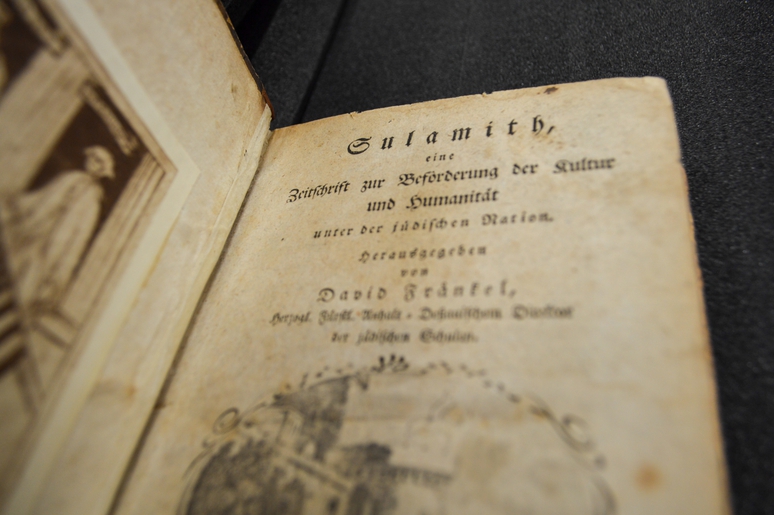
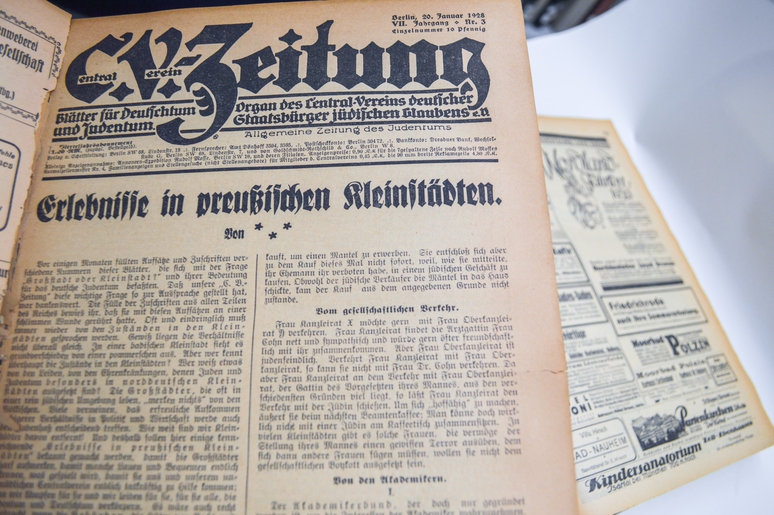
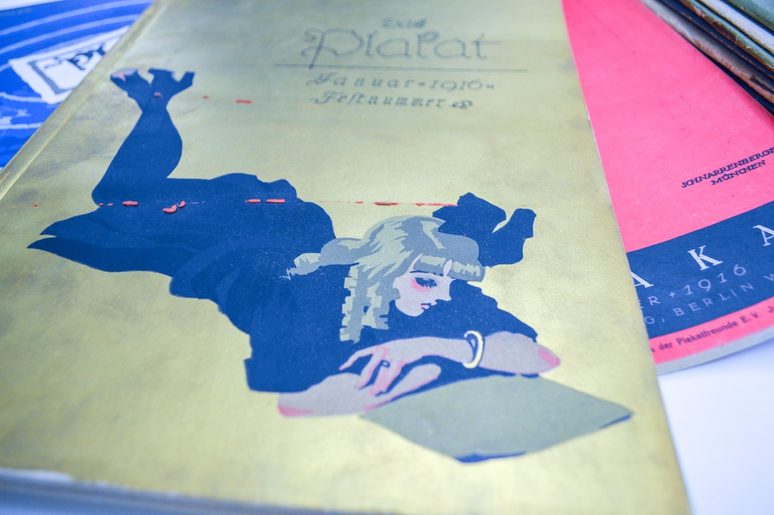
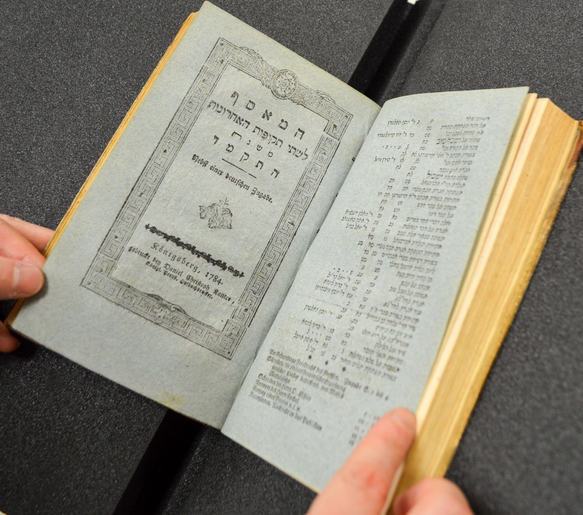
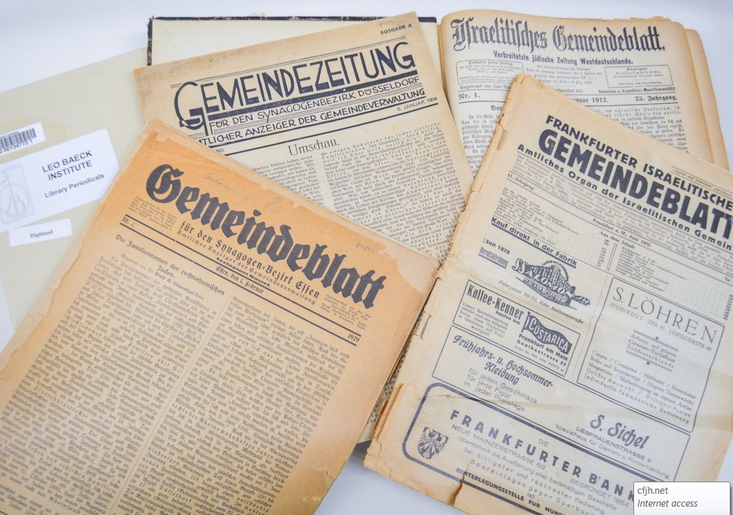
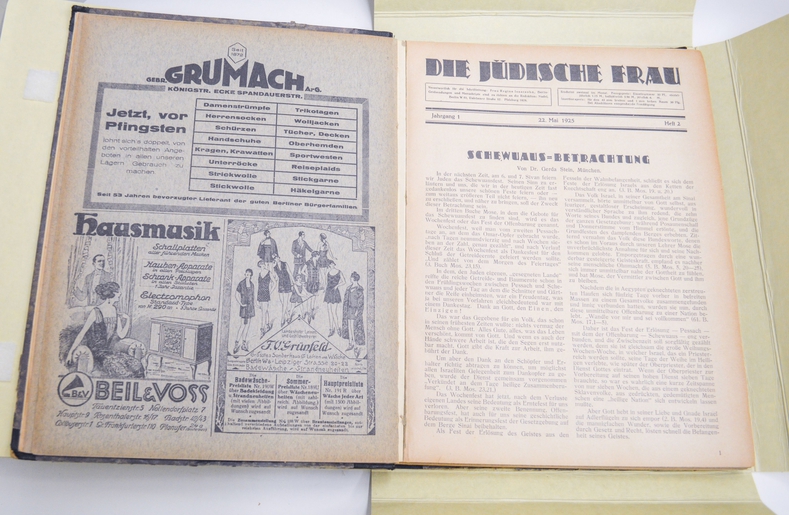
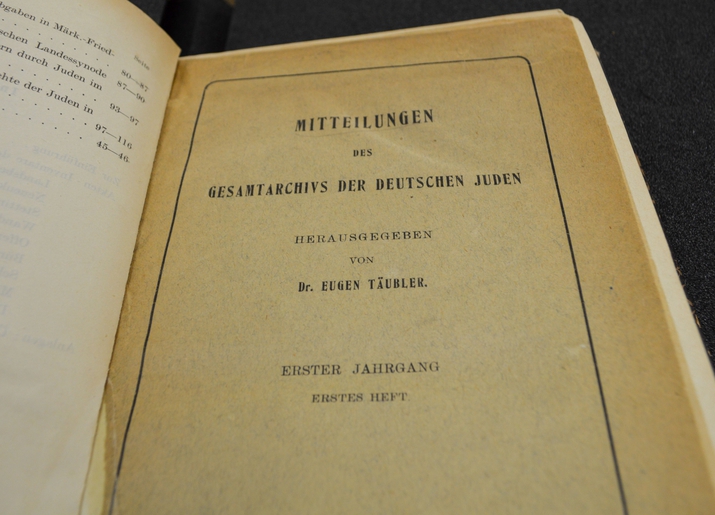
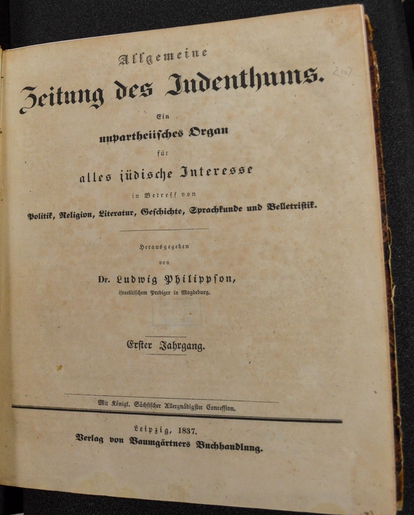
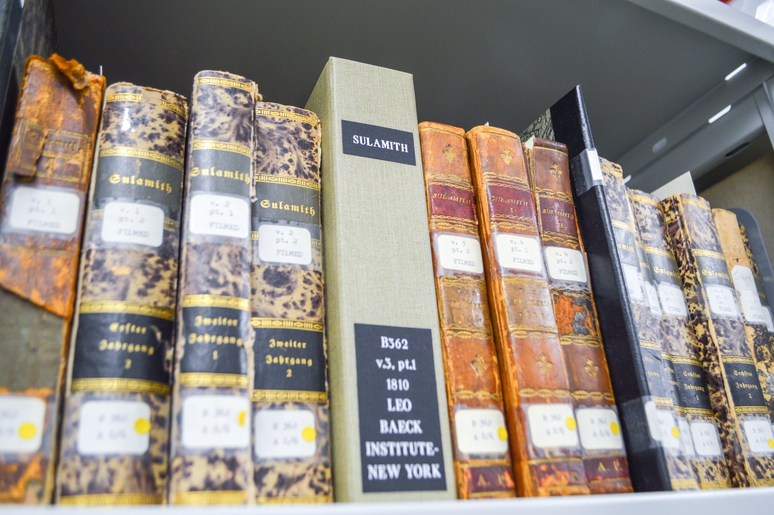
The Leo Baeck Institute’s extensive periodicals collection was an integral part of LBI’s original collection and was built up from scratch by the Institute's founders in the post-war era. The periodicals collection was first described by Max Kreutzberger in the Institute's earliest published catalog issued in 1970. Kreutzberger wrote that the newspapers, magazines and scholarly journals in in LBI's collection showed the richness of Jewish life in Germany and the complexities of “German-Jewish cooperation.” Additionally, Kreutzberger wrote that the periodicals collection—and its documentation in LBI’s first catalog—was meant to fill the gap left by World War II, when many Jewish library collections had been destroyed and scattered.
During the war, Nazis looted books from more than 450 major Jewish libraries while smaller collections of theological academies and synagogues were burned or sold for pulp. The Leo Baeck Institute’s collection, including its periodicals collection, was intended to recover some of the substantial loss that resulted from the Nazi destruction of Jewish collections.
Although acquisition and provenance details for specific titles were not specified in LBI's first catalog, Kreutzberger indicated the collections were obtained, often with some difficulty, through antiquarian booksellers and donations. The Institute also received funding from the National Endowment for the Humanities in the amount of $30,000 in 1973 and 1974 specifically to aid in expanding and completing the periodicals collection.
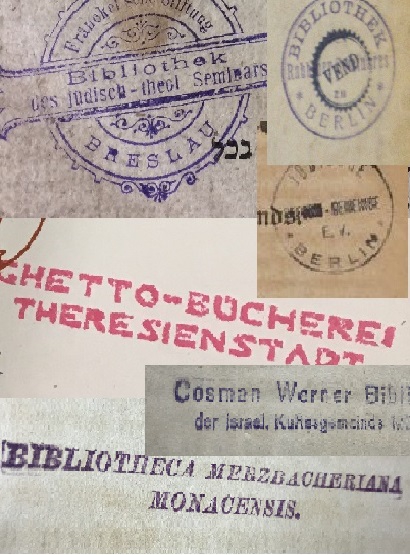
The volumes acquired for LBI's periodical collection often originated from Jewish libraries in Germany and German-occupied Europe that were looted during World War II and were then restituted after being recovered by allied forces. The periodicals collection has provenance evidence e.g. for the “Bibliothek des Rabbiner-Seminares zu Berlin” (“Library of the Rabbinical-Seminary of Berlin), the “Cossmann-Werner-Bibliothek der israelitischen Gemeinde München” (“Cossmann Werner Library of the Jewish community of Munich”) and other libraries.
Originally listing 854 periodical titles, Kreutzberger’s catalog listed a range of Jewish periodicals from widely read newspapers to scholarly journals to congregational bulletins and local community newsletters. The collection includes Jewish yearbooks, humor magazines, annual reports, almanacs, calendars and more. The Library’s original founders also collected general publications that showed the influence of German-Jews in Germany as well as the overall experience of life in Germany, such as German literary and political journals, as well as philosemitic and antisemitic publications. All the titles in the original collection have been retained—most with the original call numbers—although many have since been re-cataloged, especially rare periodicals
The range of periodicals collected by the Institute since its founding reflected the broad spectrum of Jewish life that developed in Germany up until the Holocaust. The publication history of Jewish periodicals paralleled Jewish life in Germany and how Jews, who were first marginalized through taxation and legal restrictions, then integrated into German life through assimilation and emancipation, embraced their Jewishness and Germanness, and finally were persecuted and driven into exile or murdered. The periodicals in the Leo Baeck Institute typify the historical and social developments of Jews in Germany from the period of emancipation to the Holocaust (and beyond).
The Beginnings of the German-Jewish Press
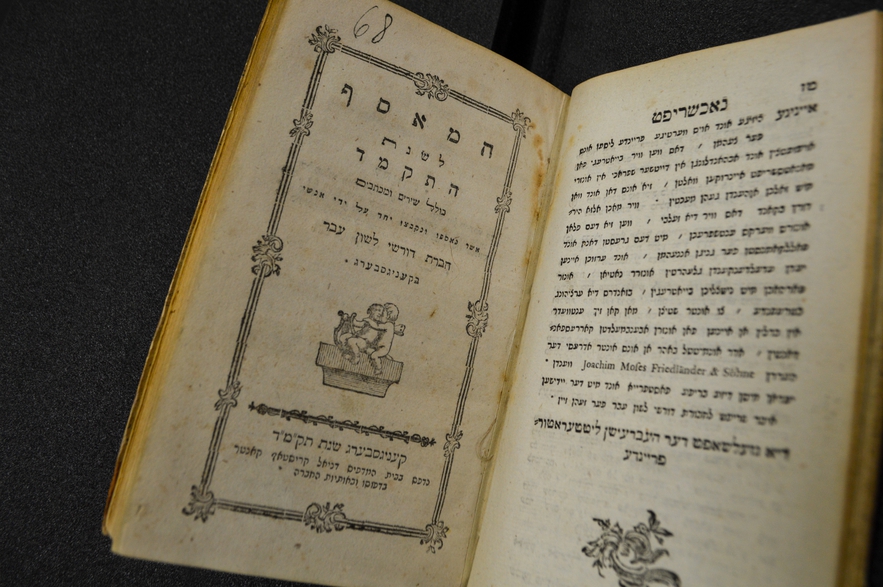
Over two hundred Jewish periodicals were published in Germany from the beginning of emancipation up to 1938. One of the earliest, Ha-Meassef (Der Sammler) (“The collector,” 1783–1811), was Moses Mendelssohn's second attempt at a journal. Lasting 27 years, Ha-Meassef was intended to educate Jews for their emancipation. Ha-Meassef was written in Hebrew, but partly printed in German letters, indicating the progression of assimilation as German Jews began to prefer German over Hebrew and Yiddish. The birth of the German-language Jewish press is considered to have begun with Sulamith (1806-1848), published by David Fraenkel and Joseph Wolf in Dessau. Sulamith promoted the emancipation of Jews, spread the use of German-language sermons in synagogues, and fought for better education of not only boys but also girls.
The Press of the Reform and Orthodox Movements
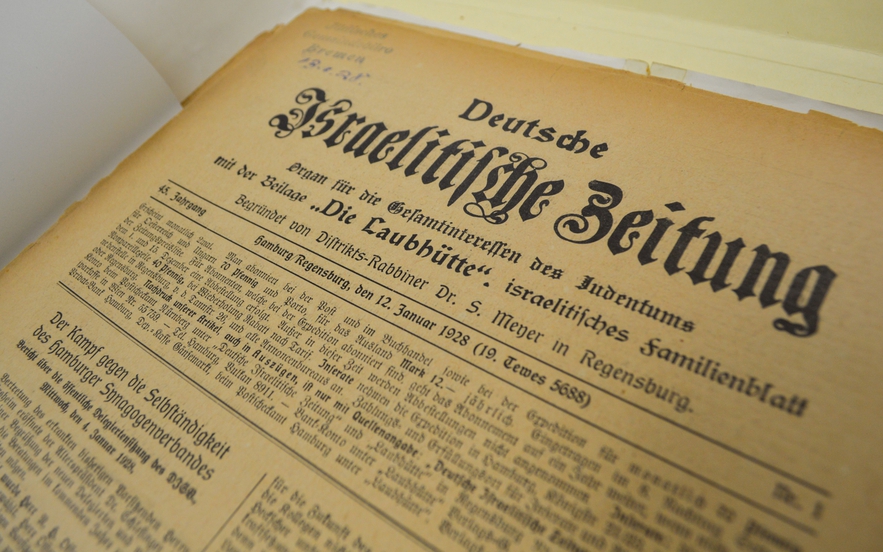
Nineteenth-century periodicals showed the developments in Judaism through the publication of separate newspapers for Orthodox and Reform Jewry. For the Orthodox Jewry there was the Deutsche Israelitische Zeitung (originally published with the title Die Laubhütte) (“German-Jewish Newspaper,” 1884–1938) founded by Seligmann Meyer. Though it never had great circulation, it was read by orthodox German-speaking Jews on five continents.
The most important newspaper for Reform Judaism was Die Allgemeine Zeitung des Judentums (“The General Newspaper of Jewry,” 1837-1922) by Ludwig Philippson. In its subtitle, the AZJ claimed to be a non-partisan publication of Jewish interests in politics, religion, literature, history, linguistics, etc., but its true objective was to complete emancipation by adding religious emancipation to political emancipation. Philippson developed a style in his paper characterized by a combination of religious and secular topics which was considered typical of most of the German-Jewish press. He died on December 29, 1889 while still wearing his boots after writing his last editorial the previous evening.
The Rise of Antisemitism and the Zionist Press
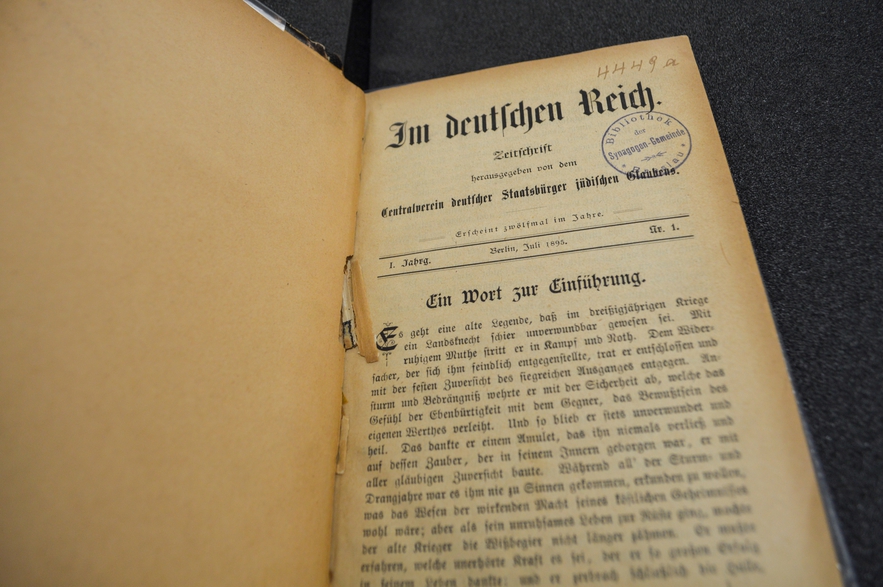
Toward the end of the 19th century, as antisemitism was on the rise, periodical publications reflected the efforts of German Jewry to confront the rise of antisemitism. Publications such as Im Deutschen Reich (“In the German Reich,” later known, C.V. Zeitung), put out by the Centralverein Deutscher Staatsbürger Jüdischen Glaubens (“Central Organization of German citizens of the Jewish Faith”) indicated the German Jews’ loyalty to Germany as well their strong connection to their religious beliefs. The C.V.’s purpose was to “cultivate Jewish life,” counsel German Jews on “spiritual, legal, and economic matters,” as well as to encourage “German loyalty.” The C.V.’s paper became political after 1924 when the organization fought against antisemitic parties. The C.V. Zeitung was one of the four most widely circulated newspapers before the period of National Socialism, in part because it was sent free to all organization members. This newspaper was also sent to non-Jewish organizations, political parties and church leaders, etc., for propaganda purposes and to promote the fight against antisemitism.
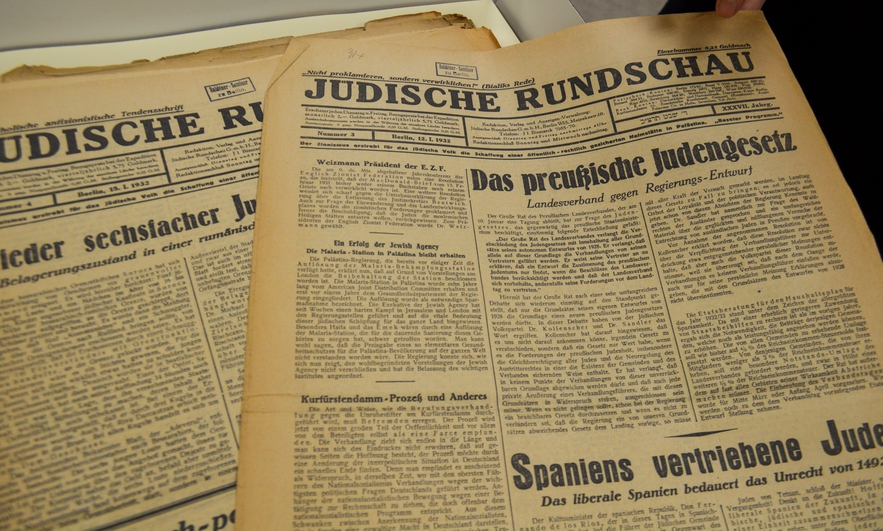
A rise in antisemitism at the turn of the century also led to the development of the Zionist press. Israelitische Rundschau (“Jewish Review,” later known as Jüdische Rundschau), for example, was the official organ of the Zionist Organization for Germany in 1896. Israelitische Rundschau was also one of four the most circulated newspapers in Germany.
Publications like LBI’s collection of “Gemeindeblätter” (“congregation newsletters”) reflected a desire for “Jewish news” in Jewish communities and reported not only on the activities of the congregations but on topics of Jewish interest as well.
The Press of German-Jewish Social, Cultural, and Athletic Associations
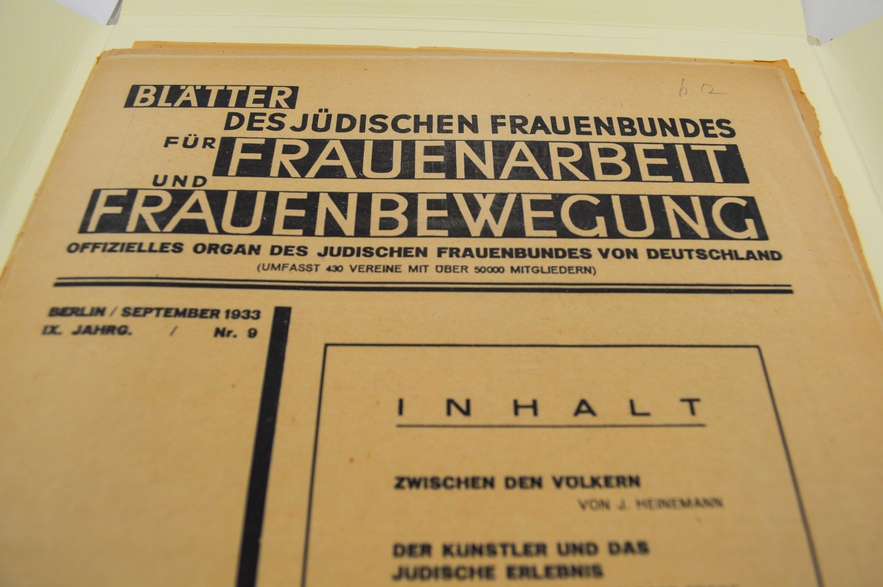
LBI’s periodicals collection also include periodicals published by the many Jewish social organizations that began in the late 19th and early 20th centuries. One prominent example is the Blätter des jüdischen Frauenbundes für Frauenarbeit und Frauenbewegung (“Newsletter of the Jewish Women’s Organization for Women’s work and the Women’s Movement”) published by the Jüdischer Frauenbund von Deutschland (Jewish women’s organization of Germany). Jewish social organizations, such as the Frauenbund, emphasized how much Jewish life flourished in Germany before 1933.
The Jewish Press and National Socialism
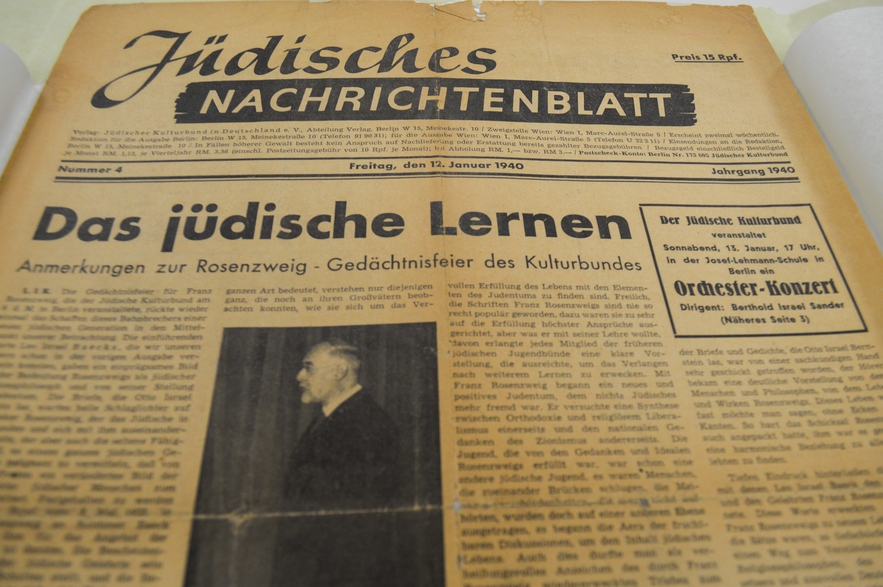
The last Jewish newspaper to be published in Nazi Germany was the Jüdisches Nachrichtenblatt (“Jewish Bulletin,” 1938–1943). The newspaper was closely watched by Nazi authorities and only published discussions and news items about the Jewish community found acceptable by the Nazi authorities.
The Jüdisches Nachrichtenblatt printed Nazi laws restricting to Jewish life, information on the remaining Jewish-run organizations offering education or theater events, as well as the times for the sabbath. This newspaper showed the attempt of Jews to maintain a semblance of orderliness and reality despite the constraints of persecution.
The Press of Jewish Scholarship
The periodicals collected by the Institute’s founders illustrated not only how connected German Jews were with the general political and cultural life in Germany but also the early development of institutions devoted to Jewish scholarship. These early publications and their corresponding institutions became part LBI’s founding principle of documenting German-Jewish history and continuing the legacy of German-Jewish scholarship. The 19th century saw the beginning of the Wissenschaft des Judentums (“science of Judaism”) movement, which established the scholarly study of Judaism as an academic field. The first journal of Jewish scholarship was the Zeitschrift für die Wissenschaft des Judenthums (ZJF, “Journal for the Science of Judaism,” 1822-1823), published by the Verein für Cultur und Wissenschaft des Juden (“Association for the Culture and Study of the Jews”) The ZJF was short-lived in part because it did not yet have the support of an institution that would provide the depth of documentation and formal structure of scholarly research that academic research institutions need.
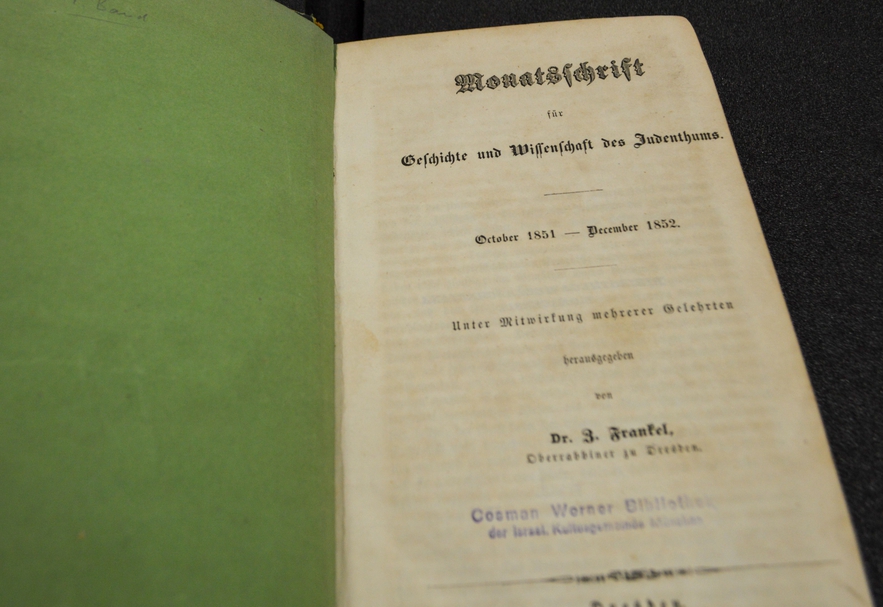
After ZJF, a number of other scientific journals were published which provided scholarly communication and exchange, the leader of which is considered to be the Monatsschrift für Geschichte und Wissenschaft des Judentums (MGWJ, “Monthly Journal for the History and Science of Judaism,” 1851–1939). The MGWJ was the unofficial journal of the newly formed Breslau Jüdisches-Theologisches Seminar (Jewish Theological Seminary), the first educational institution of modern Jewish scholarship. The founding of the Jüdisches-Theologisches Seminar was the beginning of the institutionalization of the Wissenschaft des Judentums movement. The MGWJ was an important platform and gave graduates of the Seminar a forum to publish their research.
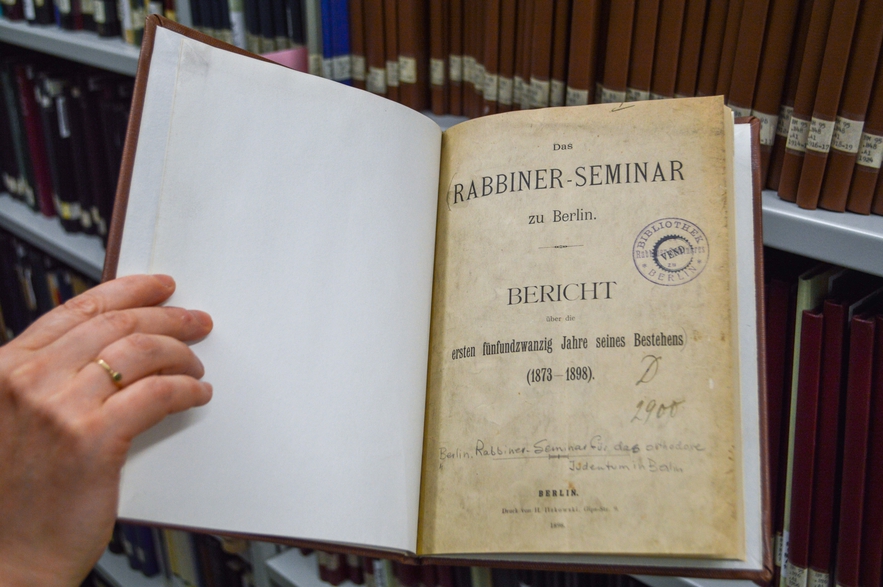
The Orthodox Jewish community followed with the founding of its own institution of scholarship, the Rabbinerseminar zu Berlin (“Rabbinical Seminary of Berlin”), and the publication of its Jahresberichte (“Annual report of the Rabbinical Seminary of Berlin,” 1873–1938) (Von der Krone, page 97). The scholarship from these communities and their publications, along with others like the Gesamtarchiv der deutschen Juden (Mitteilungen des Gesamtarchivs der Deutschen Juden, 1908–1914, 1926 ) influenced the development of Jewish scholarship and led to foundation of institutions like the Leo Baeck Institute.
Jewish Life and the German Press :
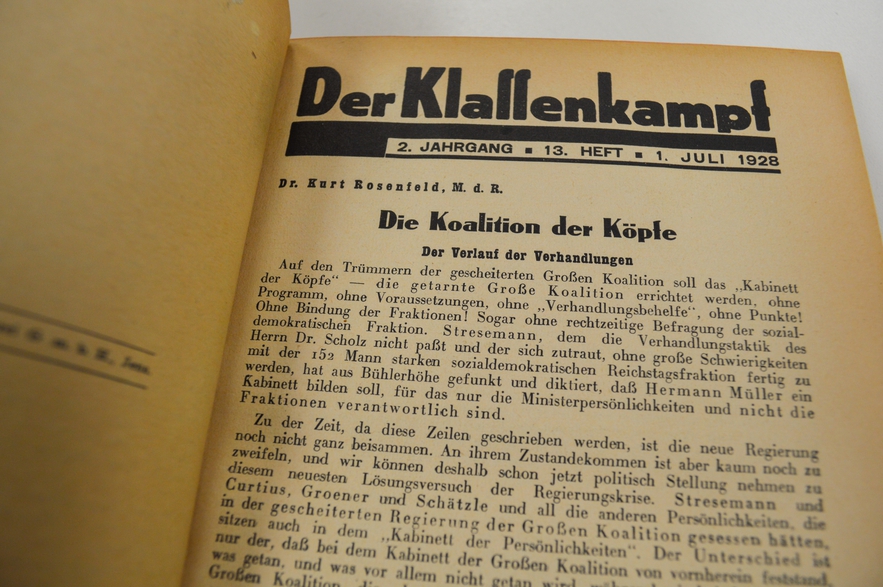
Beyond publications documenting Jewish activities and scholarship, the Leo Baeck Institute also collects political, cultural, belletristic, and historical German periodicals that reflected German life and the role many Jews played in it. Examples include Stefan George’s Blätter für die Kunst (“Leaves for Art,” 1892–1919), an influential journal in the art-for-art’s sake movement which was edited by the Jewish author Karl Wolfkehl; and Der Klassenkampf (“The Class War,” 1927–1932), a socialist journal edited in part by Kurt Rosenfeld, a socialist of Jewish descent.
Exile Press
Over 304,500 Jews emigrated from Germany during the Nazi period (EJ), most to the United States, Palestine and Great Britain. Jews began to emigrate in droves to wherever they could go after Kristallnacht, when life for Jews in Germany and German-speaking territories became unbearable. Jewish periodicals such as Neuer Vorwärts (Karlovy Vary, Czech Republic), Ordo (Paris, France), and Das andere Deutschland (Buenos Aires, Argentina) show the paths of exile taken by Jewish refugees fleeing from Germany and Austria.
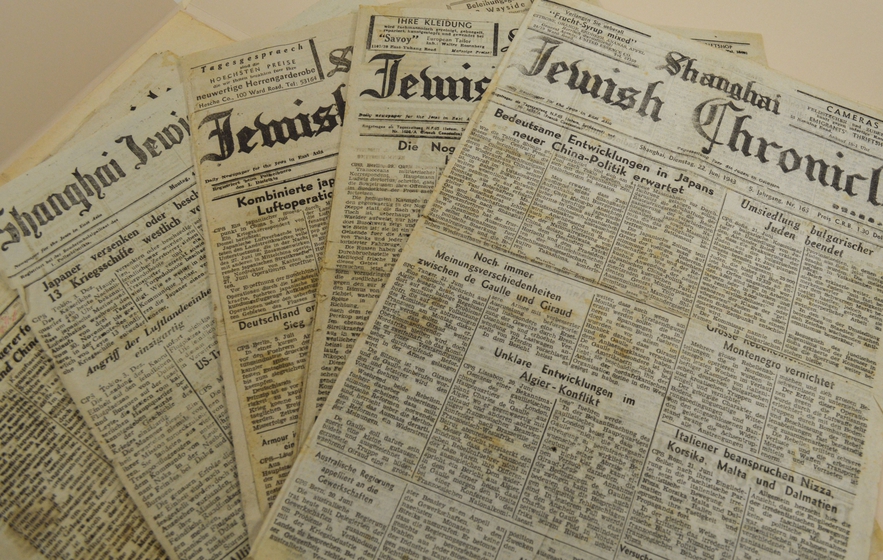
Around 20,000 Jewish refugees fled to Shanghai, where refugees could enter the port without a visa. Many Polish refugees arrived in Shanghai after being deported from Japan in 1941. Most Jewish refugees were restricted to living in the Hongkou ghetto of Shanghai, where life was crowded and hunger and disease were widespread. Despite their hardships, Jewish refugee periodicals show a thriving community in Shanghai; they produced many magazines, journals and newspapers such as the Shanghai Jewish Chronicle, Shanghai echo, Jüdisches Nachrichtenblatt der Jüdischen Gemeinde mitteleuropäischer Juden in Shanghai (“Jewish Bulletin of the Jewish Community of Middle European Jews in Shanghai”), Sport, Medizinische Monatshefte Shanghai ( "Medical Monthly" for refugee physicians), and the Gelbe Post.
Bibliography
Kreutzberger, Max. Leo Baeck Institute New York, Bibliothek und Archiv. Katalog Band I. Tübingen : J.C.B. Mohr (Paul Siebeck), 1970.
Krone, Kerstin von der. Wissenschaft in Öffentlichkeit: die Wissenschaft des Judentums und ihre Zeitschriften. Berlin : de Gruyter, 2011.
Edelheim-Muehsam, Margaret T. “The Jewish press in Germany.” In: LBI Year Book Vol. 1, Issue 1, (1956). Ps 163–176 https://doi.org/10.1093/leobaeck/1.1.163
MS 435, Maier, Kurt Salomon.”The Leo Baeck Institute Library : Keeper of the flame.” MS 435. http://digital.cjh.org:1801/webclient/DeliveryManager?pid=533224
“Presse.” Philo-Lexikon : Handbuch des jüdischen Wissens. Berlin : Philo Verlag, 1936.
„Presse, Jüdische.“ Jüdisches Lexikon. Berlin : Juedischer Verlag, 1930.